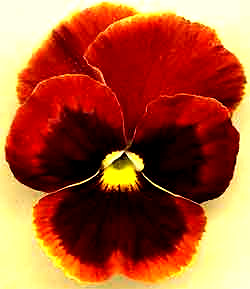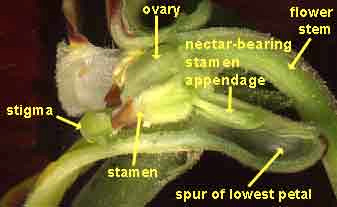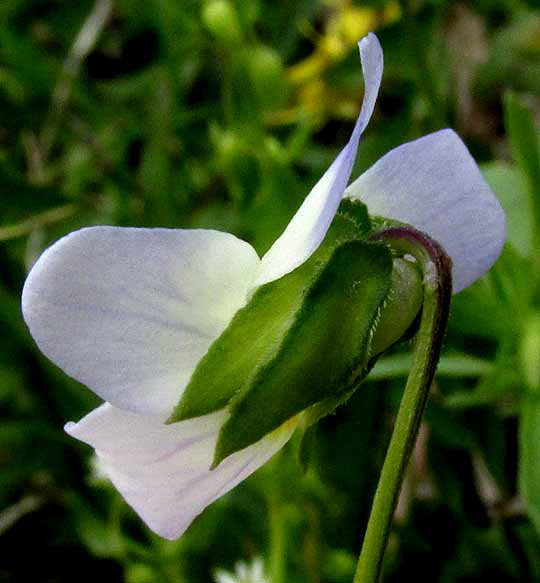
The thing to know about pansies is that they are violets. They belong to the Violet Family, the Violaceae, and are members of the genus Viola, as are all true violets. Its binomial is Viola x wittrockiana, the "x" indicating its hybrid nature.
The picture shows one of the pansy's -- and all other violets -- defining features: The flower has five petals, of which two of the four upper ones are similar, but the lowest petal is expanded. The flower more or less has bilateral symmetry -- one side of the blossom is a mirror image of the other.

Other characteristics of pansy flowers can only be seen from the side, as in the picture at the left, where a flower has been cut down the middle lengthwise. If you don't know what a stamen or an ovary is, before you read the following you may want to review our Standard Blossom Page.

In the above picture, notice how the large, lowest petal creates a fingerlike spur projecting behind the flower's face. This spur houses the nectar-producing glands. If you look at a pansy flower from the side, this striking feature is mostly hidden by the calyx. On a regular violet wildflower, the Field Pansy, Viola bicolor, appearing at the right, you'd hardly guess that such a spur exists.
But the spurs are important, for they house the nectar that pollinators are looking for. They can be referred to as nectar spurs. Their importance to the flower is indicated by the fact that over time, through convergent evolution, nectar spurs have developed in several unrelated plants. Most famously, they're on many orchid flowers, but also they appear on columbines (genus Aquilegia), larkspurs (genus Delphinium), the Bladderwort Family (Lentibulariaceae), Dutchman's Breeches (Dicentra cucullaria), and others. Also, nectar spurs have evolved not only from petals, but also from sepals, as in touch-me-nots (genus Impatiens), and on the "hypanthium," a structure on some flowers, such as Nasturtiums (genus Tropaeolum).
The number of pansy cultivars is great. Already in 1833 there were 400 named pansies on the market.